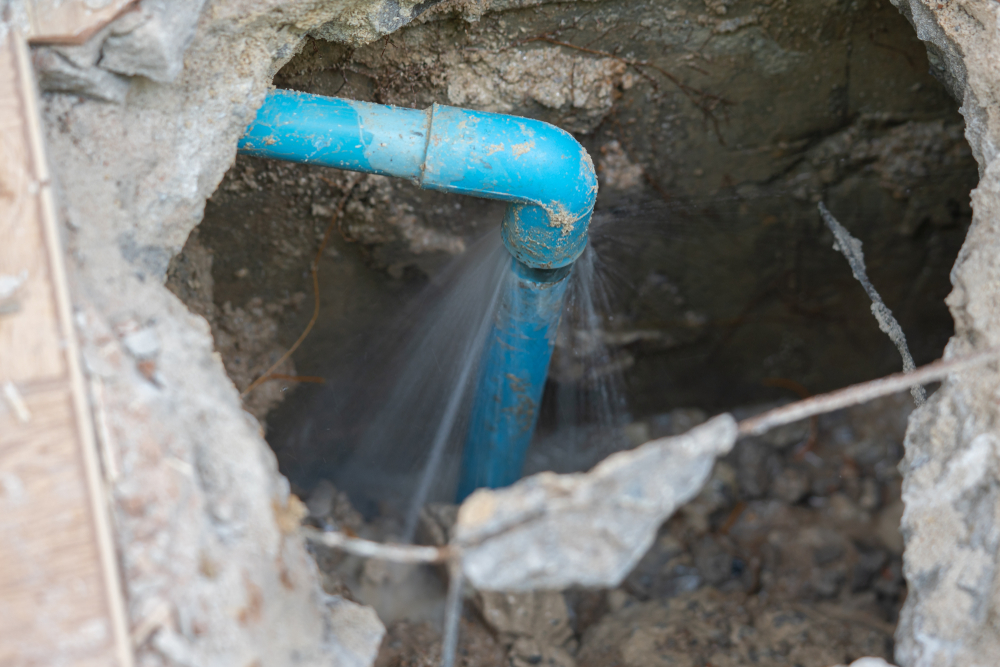Expose Concealed Water Line Leaks: Six Proven Detection Techniques
Expose Concealed Water Line Leaks: Six Proven Detection Techniques
Blog Article
Are you searching for advise around Hacks to detect leaks?

Early discovery of dripping water lines can minimize a potential calamity. Some small water leakages may not be visible.
1. Take A Look At the Water Meter
Every home has a water meter. Checking it is a guaranteed way that assists you find leakages. For starters, turn off all the water sources. Guarantee nobody will flush, utilize the tap, shower, run the cleaning maker or dish washer. From there, go to the meter and watch if it will certainly change. Because no person is using it, there must be no activities. If it moves, that suggests a fast-moving leakage. If you discover no adjustments, wait a hr or 2 and also check back once more. This means you might have a slow leak that can also be underground.
2. Examine Water Intake
Analyze your water bills and track your water intake. As the one paying it, you should observe if there are any type of disparities. If you spot sudden changes, despite your usage coinciding, it indicates that you have leaks in your plumbing system. Bear in mind, your water costs ought to fall under the very same variety every month. An unexpected spike in your costs indicates a fast-moving leak.
On the other hand, a constant rise monthly, despite having the same habits, shows you have a sluggish leak that's additionally slowly rising. Call a plumber to extensively inspect your residential property, particularly if you feel a warm location on your flooring with piping beneath.
3. Do a Food Coloring Examination
When it pertains to water intake, 30% comes from commodes. Examination to see if they are running properly. Drop specks of food shade in the container and wait 10 minutes. If the shade in some way infiltrates your bowl during that time without flushing, there's a leakage between the container as well as bowl.
4. Asses Exterior Lines
Do not fail to remember to inspect your outside water lines also. Test faucets by attaching a yard tube. Needs to water permeate out of the connection, you have a loose rubber gasket. Change this and also make sure all connections are tight. If you've got a sprinkler system, it will certainly assist get it skillfully analyzed and kept yearly. One tiny leakage can lose tons of water and increase your water costs.
5. Examine the situation as well as evaluate
House owners should make it a routine to examine under the sink counters and also even inside cupboards for any type of bad odor or mold and mildew growth. These two red flags indicate a leak so timely focus is called for. Doing regular assessments, also bi-annually, can conserve you from a significant problem.
Check for stainings and compromising as a lot of appliances and pipes have a life span. If you presume dripping water lines in your plumbing system, do not wait for it to intensify.
Early discovery of dripping water lines can alleviate a prospective catastrophe. Some small water leaks may not be noticeable. Examining it is a proven method that aids you uncover leakages. One small leak can waste tons of water and also surge your water expense.
If you suspect dripping water lines in your plumbing system, don't wait for it to escalate.
Tips for Detecting Hidden Plumbing Leaks
Check for Signs of Water Damage
We recommend that you check the following places for evidence of water damage:
Near where you store your water heater
Around your sump pump
In areas where pipes are visible
Underneath cabinetry or a vanity beneath a sink
Where your outside hose bib isIf water damage is present, you may also notice mold and/or mildew or smell a foul or musky odor. You might also be able to hear the sound of water running where it shouldn’t be.
Perform a Water Meter Test
One of the easiest ways to determine whether you have a hidden leak on your property is to test your water meter. Turn off all appliances in that use water and make sure you don’t have any faucets running. Locate your water meter and record the reading on it. Continue to leave everything off for a minimum of two hours and then go back and see the meter reading. If it’s a noticeable difference, chances are you have a hidden plumbing leak.
Monitor Your Outside Usage
As the seasons change, you might use more water to keep your yard lush and green and your flowers blooming. However, it’s important to routinely ensure that your sprinkler or irrigation system is working properly and that any outside faucets are completely off. This way you’re not wasting any water.
Do the Toilet Food Coloring Test
Are you kept up at night because your toilet continues to run? If you’ve noticed your toilet randomly refills, especially when it’s not in use, it could mean you have a defective flapper tank and water will leak into the bowl. Fortunately, there’s an easy (and kind of fun!) way to test whether you’re dealing with this issue. Grab some food coloring and add a few drops into your toilet’s tank. Wait 15 minutes and then check to see whether the water in the bowl is colored. If it is, you have a leak within your toilet and the internal assembly will need to be repaired or replaced.
https://www.carterservices.com/blog/2020/february/tips-for-detecting-hidden-plumbing-leaks/

As an avid reader about Detecting hidden plumbing leaks, I assumed sharing that information was a smart idea. If you enjoyed our blog entry kindly don't forget to share it. Thank-you for your time spent reading it.
Problem? Contact now! Report this page